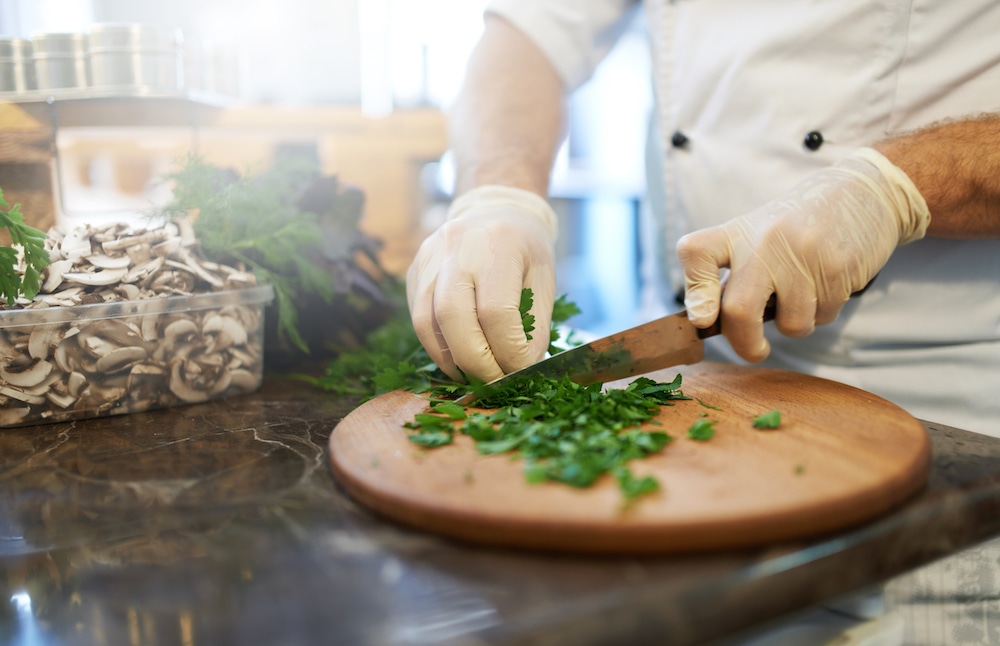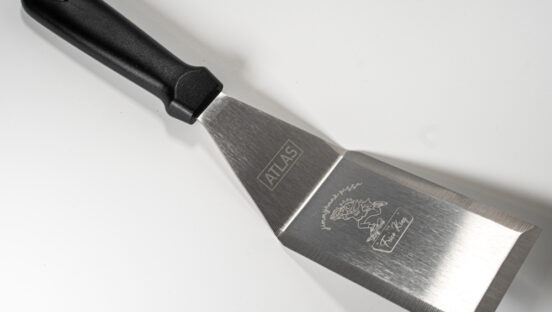It’s hard to imagine that the way a pepper is cut during preparation can dramatically reduce the amount of food wasted in a restaurant kitchen, but that’s exactly what one quickservice restaurant recently found during a pilot of a new food waste reduction program created through the partnership of the National Restaurant Association and World Wildlife Fund (WWF). By implementing a small shift in prep standards for green peppers, the restaurant saw an increased yield of 9.5 percent—or two more pounds of sliced peppers per case.
The program, 86 Food Waste, consists of a set of free resources available for download by any interested restaurant. To test real-world implementation, the Association and WWF recruited both national and independent restaurants to participate in a 30-day pilot of the program with support from The Rockefeller Foundation and Tork, an Essity brand.
Related: Study finds restaurants can reduce food waste by using compostable dinnerware
The findings from the pilot were collected into a report, Managing Food Waste in Restaurants: How Small Steps can have a Big Impact on Reducing Waste and Protecting the Planet. Click here to view and download the free report.
“According to research, the restaurant industry has the potential to gain $1.6 billion in unrealized profits annually by implementing food waste reduction tactics,” said Jeff Clark, director of sustainability and nutrition for the National Restaurant Association. “The problem is, making these commitments, training staff, and running a profitable restaurant can be exceedingly difficult, especially if an owner or manager tries to take on the issue of food waste all at once. This partnership with WWF gave us the unique opportunity to create and pilot real-life food waste reduction efforts that can help restaurants start making small changes across how they order supplies, prepare foods, plan menu concepts, and donate or divert unused food.”
Related: How pizzerias can reduce plastic waste and still keep customers happy
The report is an insider’s view of how restaurants of different segments turned theory into practice and includes important lessons learned from the pilots. Highlights of these findings include:
- Separation and measurement drive solutions, no matter the restaurant style. Implementation of a food waste reduction program looks different depending on a restaurant’s concept, operation, location and other factors. However, separation and measurement of food waste is an effective way to zero in on strategic opportunities to fight unique or situational food waste challenges.
- Reduction opportunities exist to tackle both front- and back-of-house waste. Waste breaks down differently in the front-of-house and back-of-house. The study found that waste generated in the back-of-house was, on average, 73 percent a result of spoilage and preparation waste, while front-of-house was 27 percent customer plate waste. The pilots found numerous tactics to address waste in both functions.
- Staff engagement is essential to success: The restaurant sector is fast-paced and has a high turnover rate in every level of staffing. It’s important to have at least one team member dedicated to championing new behaviors and embedding these practices into the standard operating procedures and employee culture of the restaurant.
“In the U.S., there are more than one million restaurants employing more than 15 million people. Imagine if every restaurant in the U.S. decided to make a small and immediate change—such as measurement or a prep adjustment—to address food waste? It’s the small changes, when made by millions of people, that add up to something big,” said Pete Pearson, senior director of food loss and waste at WWF.
To make the 86 Food Waste program available to as many restaurants as possible, all resources are downloadable at no cost at 86FoodWaste.com.













